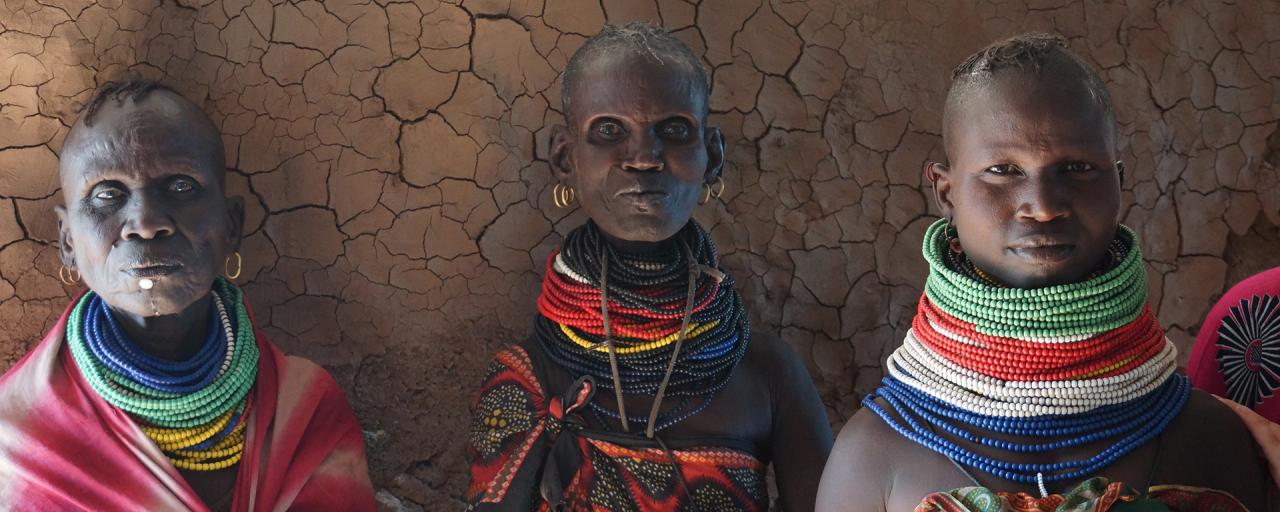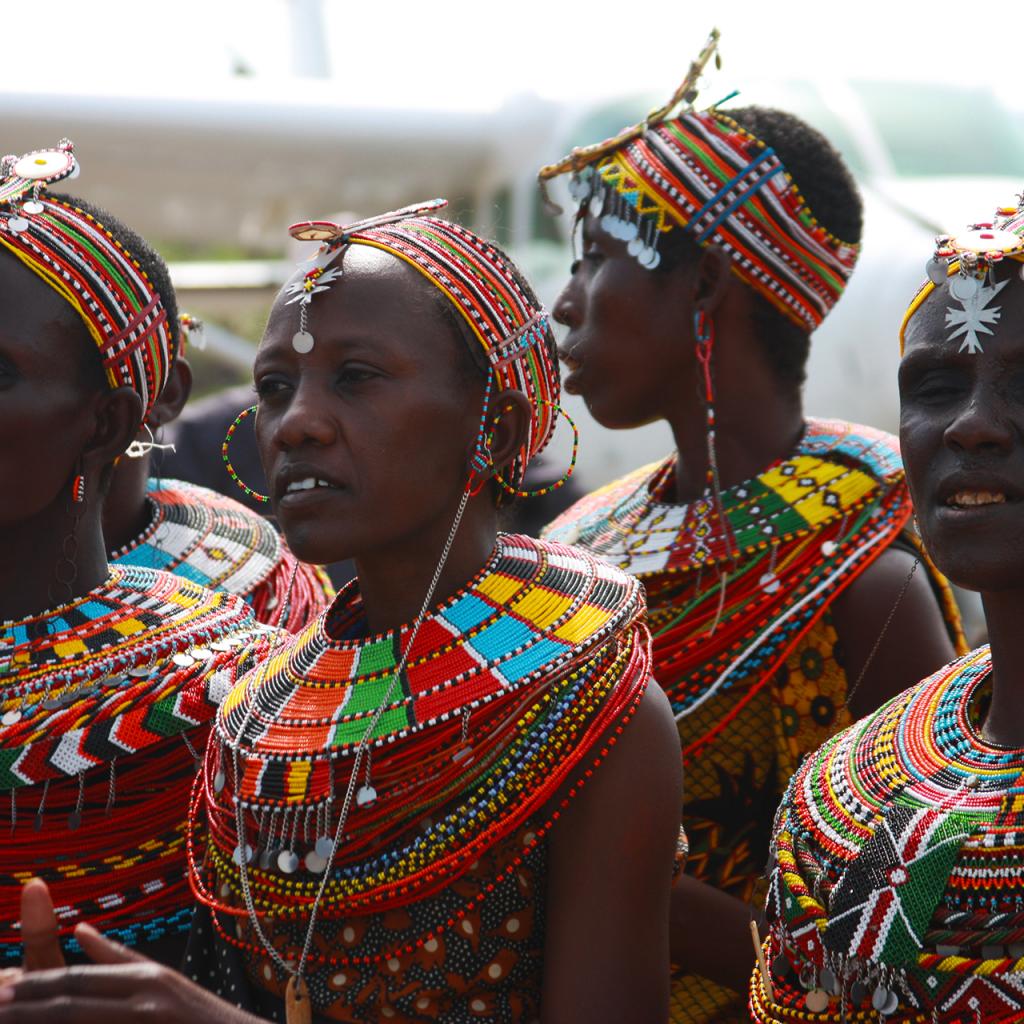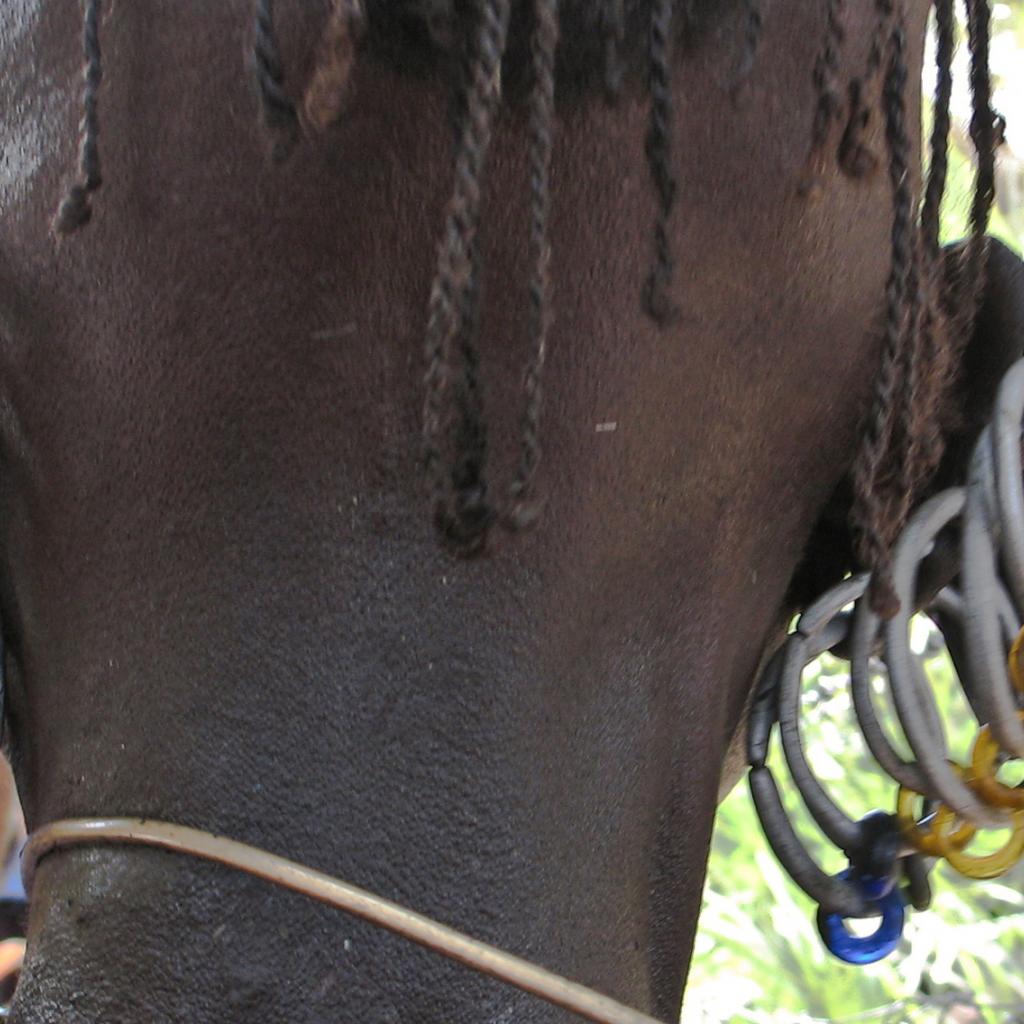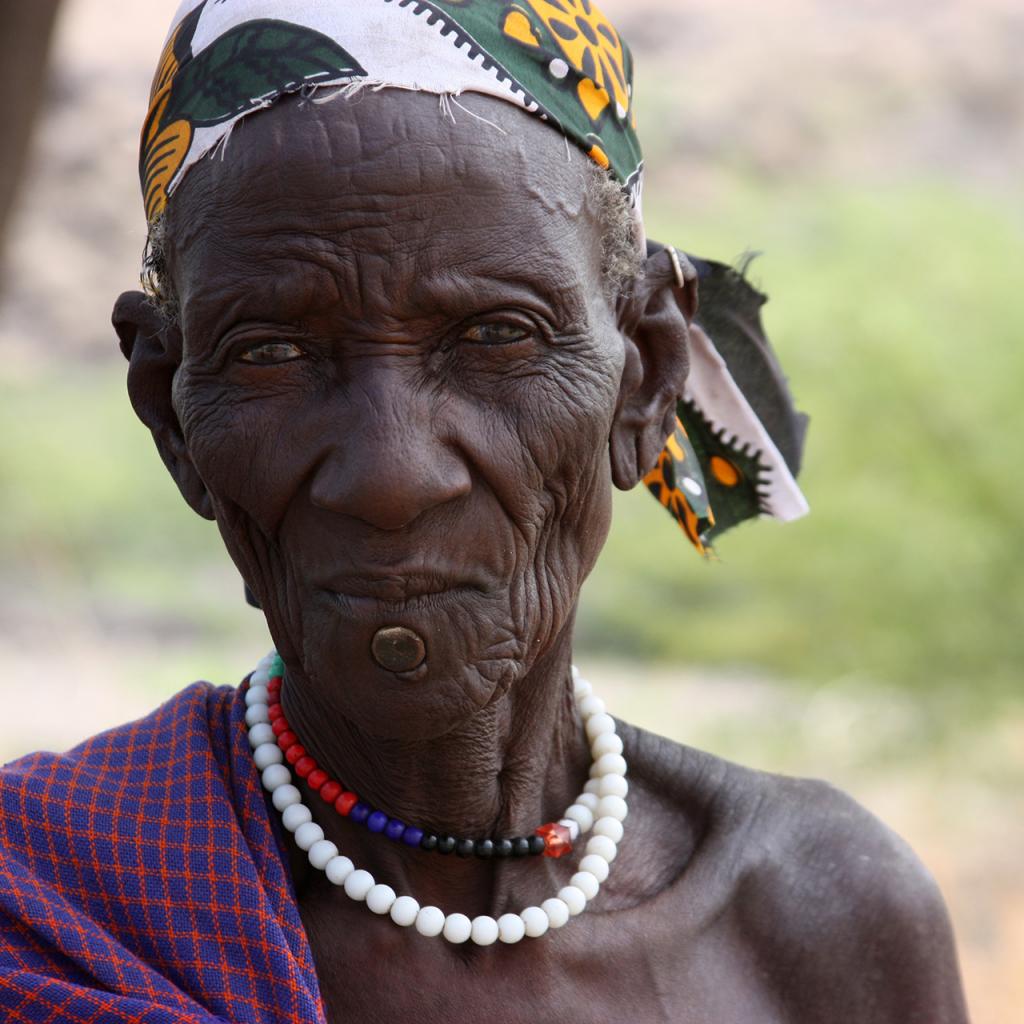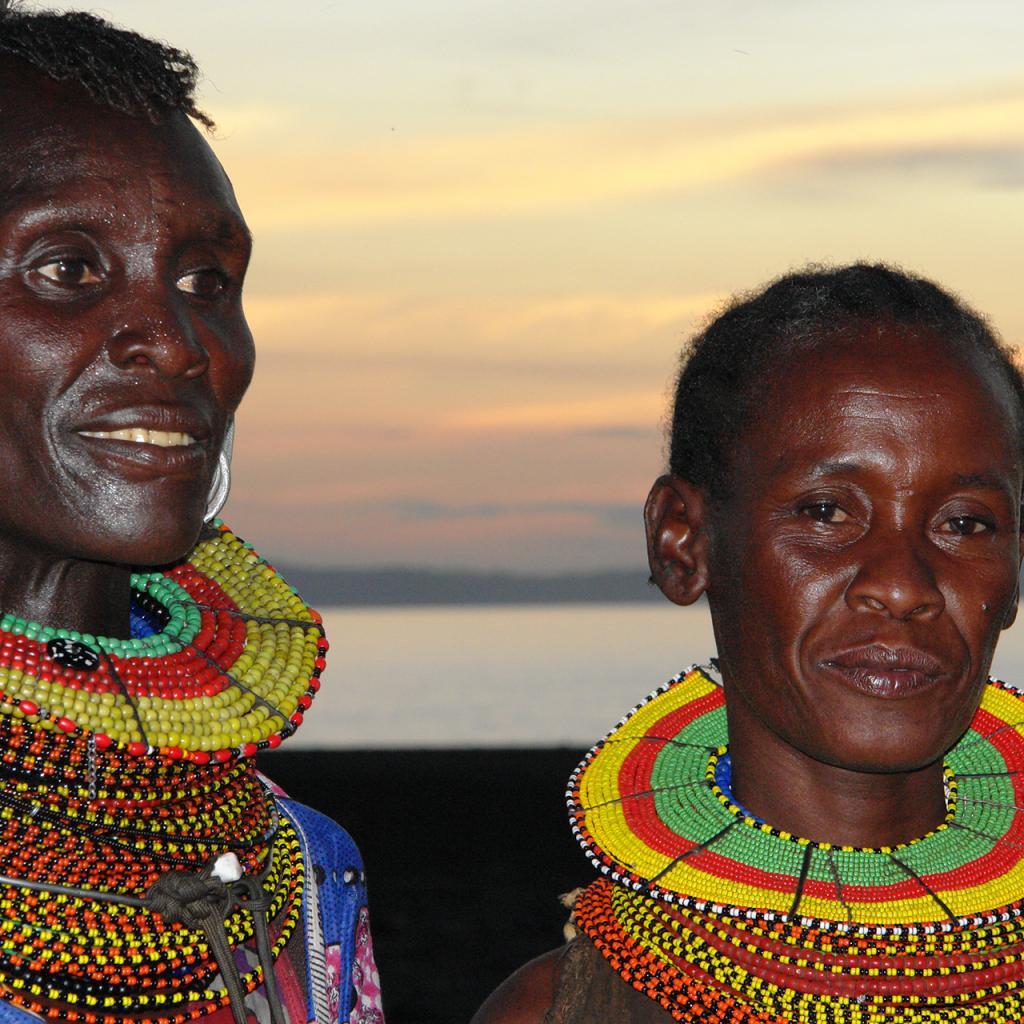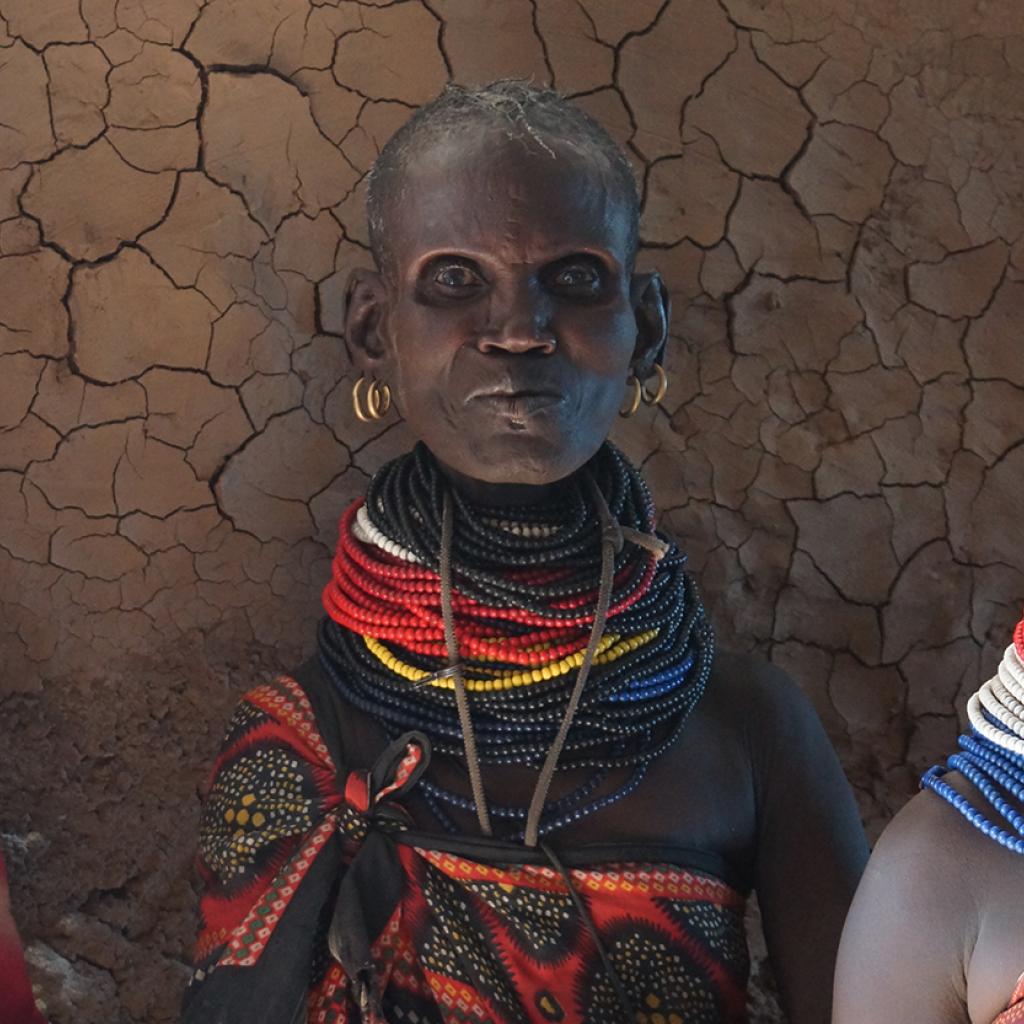The Turkana are a Nilotic ethnic group and, like all the Nilotic populations, their economy and society are based on the cattle, to the point of being defined as the livestock society.
The Turkana since ever perform cattle raids and justify these actions with a legend passed down from generation to generation: God has given to their ancestors all the cattle in the world, so raid the cattle of others is not a crime, but simply means to recover what belongs to them by divine original right.
Livestock has, as we have seen, a central role in the Turkana society and culture: cattle, goats, camels and donkeys are the basis of subsistence and economy for this people and are not only used as a primary food source, with the production of milk and meat, but they are the foundation on which to build the wealth of a man who allows him to get a wife and pay the dowry.
In a polygamous society like that of the Turkana, the number of livestock owned determines the number of wives that any man can have.
Livestock plays an important role in the payment to have generated illegitimate children, to pay fines or compensate damages caused or as gifts for special occasions such as rituals and ceremonies.
The entire Turkana population is divided into 12 clans, this subdivision, however, has a special meaning on the socio-economic level; the heart and the center of the Turkana social system is in fact the Ekal, extended family where the father is the absolute master, ekapolon, livestock, will not be divided among the children as long as he is alive.
In everyday life neighborly relations are important, different Ekal can join, forming a village scattered in a common grazing area, and this above all to help each other in the search for water, in the livestock housing and mutual assistance in case of need.
The villages are made up of fairly large huts that can accommodate up to six people, they have a structure that is made of branches and mud, while the roof is made of palm fronds intertwining dum palm trees or Hyphaene thebaica; during the rainy season the dung is used as a waterproofing material.
Livestock are also crucial in the Turkana feeding, who exploit animals for their milk, blood and meat; but for the Turkana families, who live in a particularly hostile environment, every edible thing is used as food: eggs, fish, although it is still taboo for some clans, poultry and meat of wild animals; all these are foods that are considered strictly taboo for other shepherds populations, with the exception only of the dog and hyena meat, while the donkey, besides being used for the transport, is commonly used for the meat but not for the milk .
The meat is eaten after being roasted over fires of dried cow dung, the entrails are never consumed, while the hides are used to make clothing.
The Turkana, in addition to farming and hunting, collect some berries and honey, that is the only sweet food in their diet; they make exchanges with the neighboring populations to procure tea and corn with that they cook polenta.
Life, tradition and culture of Turkana people
- Turkana clothing and jewels
- Turkana rituals and ceremonies
- Turkana body care and modification
- Turkana religion
- Turkana society and the importance of breeding


